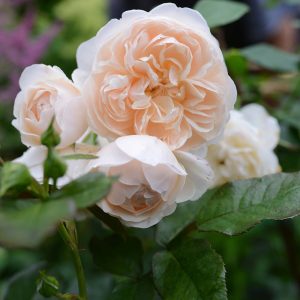Description
Tickled Pink is a delightful floribunda rose with a charming old-fashioned appeal. Its upright growth habit reaches up to 1.2m in height, making it an ideal choice for adding structure and interest to your garden. From summer through to autumn, clusters of soft pink blooms appear, creating a lovely display that is sure to delight. The delicate flowers have a gentle charm that will add a touch of elegance to any garden setting. As a relatively compact rose, it is perfect for planting in mixed borders or as a specimen plant in a medium-sized pot. With its good disease resistance, Tickled Pink is an easy-to-care-for rose that is perfect for both novice and experienced gardeners alike.
Key Facts
- Common Name(s):Tickled Pink Rose
- Hardiness:Fully hardy
- How big will I get? Rosa ‘Tickled Pink’ can grow to a height of 1m and a spread of 1m.
- Did You Know That:Roses have been cultivated for thousands of years and are one of the oldest flowers in the world?
Plant Calendar
A rough guide to how this plant will change through the year.
| Jan | Feb | Mar | Apr | May | June | July | Aug | Sept | Oct | Nov | Dec | |
| Flowering Time |  |
 |
 |
|||||||||
| Foliage Colour |  |
 |
 |
 |
 |
 |
 |
 |
 |
| J | F | M | A | M | J | J | A | S | O | N | D |
 |
 |
 |
|||||||||
 |
 |
 |
 |
 |
 |
 |
 |
 |
Care Guide

Soil Requirements
Rosa ‘Tickled Pink’ prefers moist but well-draining soil. This plant can grow in soil with a wide range of pH levels, it is not picky about the pH level of the soil.

Best Position
Rosa ‘Tickled Pink’ can handle either an exposed or a sheltered position and requires full sun to thrive, this consists of more than six hours of direct sunshine per day.

Maintenance
Rosa ‘Tickled Pink’ should be pruned in late winter or early spring, before new growth begins. Begin by removing any dead, damaged, or diseased wood from the plant, making sure to sterilize your pruning shears between cuts to prevent the spread of disease. Next, cut back any old wood to encourage the growth of new shoots, cutting back to a healthy bud or lateral branch. Remove any weak or spindly growth that won’t produce good blooms, focusing on leaving strong, healthy shoots that will produce plenty of flowers. Finally, shape the plant by cutting back any overly long or unruly shoots, creating a more compact, attractive plant. By following these steps, you can keep your shrub roses healthy and blooming beautifully year after year.

Pest, Diseases and Wildlife
Rosa ‘Tickled Pink’ can have problems with aphids, leafhoppers, and scale insects , it can be vulnerable to certain diseases such as black spot, rust and powdery mildews. It is also known to attract bees, butterflies and other pollinators. It is not considered to be toxic.





